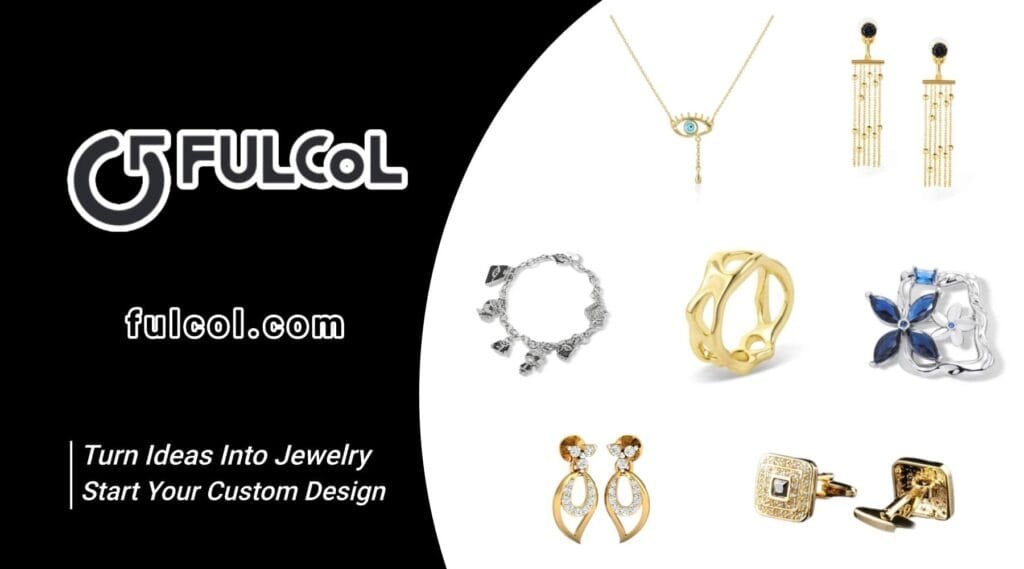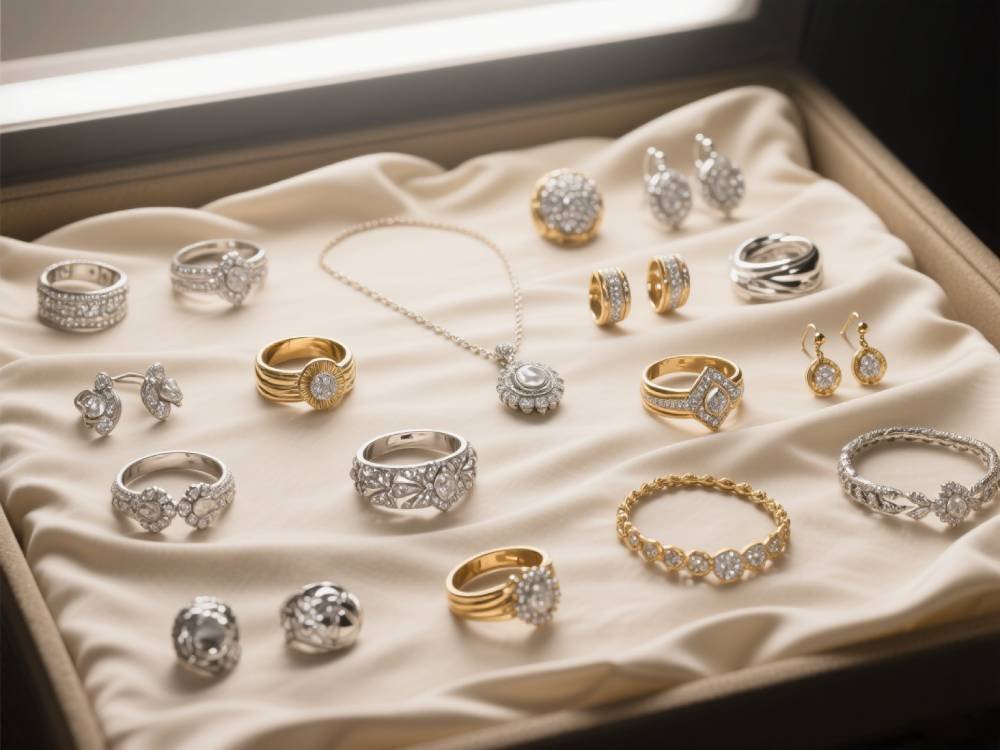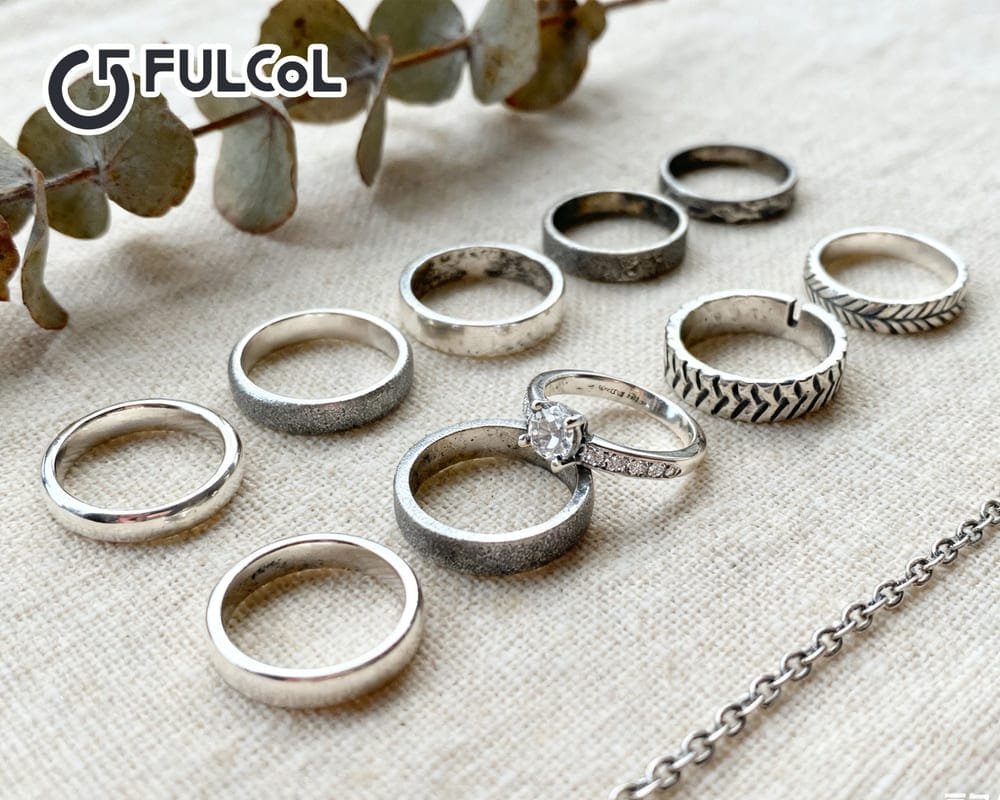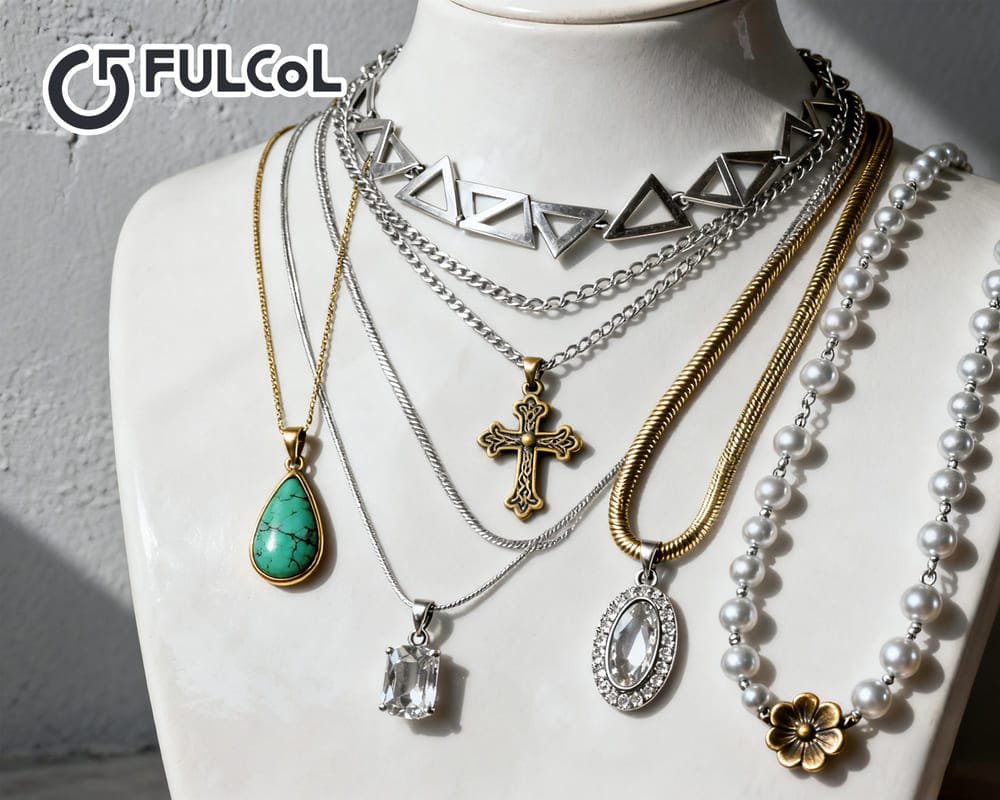In the jewelry industry, personalized customization is no longer exclusive to luxury brands. As consumers’ pursuit of unique aesthetics and commemorative significance continues to increase, more and more brands and designers choose to provide customized services to meet customers’ individual needs for style, engraving, size and even materials. However, once customized jewelry enters the “mass production” stage, it faces many challenges: How to ensure that each finished product faithfully restores the design? How to ensure the quality consistency of hundreds or thousands of products? How to achieve large-scale production efficiency while maintaining the texture of handmade craftsmanship?
Fulcol custom jewelry manufacturers will deeply analyze how to achieve a quality balance between customization and mass production, and provide practical suggestions to help brands, designers and buyers establish a stable and efficient jewelry production system.
Table of contents
- Clarify design and specification standards: Lay the foundation for the first step
- Quality control of material procurement: Ensure quality from the source
- Standardization of production processes: process details determine product consistency
- Multi-stage quality inspection mechanism: not one-time inspection, but full process control
- Cooperate with professional manufacturers: experience and system guarantee stable quality
Clarify design and specification standards: Lay the foundation for the first step
Before mass production, the most critical step is to accurately “standardize” the creativity. A good custom design must not only be beautiful, but also “reproducible”, otherwise it is very easy to get out of control when scaling up production. Here are a few key points:
Design confirmation: Full communication with customers or brands is the first priority. Make sure every detail is recorded, including dimensions, tolerances, gemstone size, inlay methods, engraving content, polishing effects, etc. Avoid errors caused by ambiguous words.
Use CAD and 3D modeling: Use professional jewelry modeling software (such as RhinoGold, MatrixGold) to build visual and parametric models. 3D models are not only convenient for customers to confirm, but also provide accurate basis for subsequent wax model printing or CNC processing.
Documentation of design specifications: Output the confirmed model as a “production specification”, including three-view drawings, dimensioning, material description, process description, etc. This document will become the “blueprint” for the entire mass production, and each technician and quality inspector must strictly follow it.
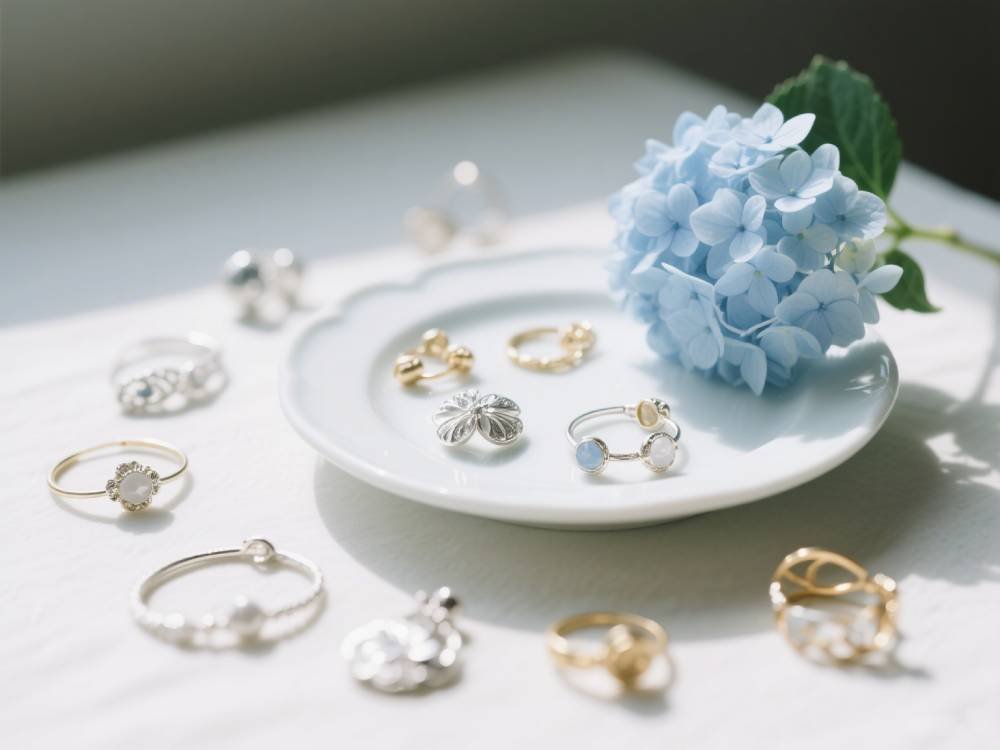
Quality control of material procurement: Ensure quality from the source
If design is the soul, then materials are the “flesh and blood” of custom jewelry. The stability of the material directly determines the texture, durability and final market feedback of the finished product.
Choose a compliant raw material supplier: For example, 925 sterling silver must reach 92.5% purity and contain a specified proportion of copper alloy to enhance hardness. Suppliers may be required to provide alloy composition test reports (such as spectral analysis reports) or RoHS and REACH compliance documents issued by a third party.
Establish material procurement SOP: including raw material acceptance standards (weight, size, gloss), sampling ratio, use of inspection tools (such as XRF analyzer, hardness tester, etc.), and record batches.
Prevent material batch differences: One-time purchase of silver or copper materials required for large-scale production to avoid composition deviation caused by changing suppliers in the middle. For products with color electroplating, the consistency of the electroplating solution formula should be maintained.
Auxiliary materials also need to be standardized: such as solder, gem adhesives, wax model materials, etc., their impact on the quality of the finished product cannot be ignored.
Standardization of production processes: process details determine product consistency
Regardless of the scale of production, standardized operations are always the only way to ensure consistency. Especially in jewelry production involving multiple links and multi-person collaboration, it is necessary to ensure that the process steps are well documented.
Establish SOP documents: Each process (such as mold turning, mold reversing, polishing, welding, inlaying, electroplating) must be equipped with a standard operating manual, including tool use, temperature and time control, qualification standards and precautions.
Introduce molds and CNC equipment: For example, use 3D printed wax molds and metal pressing molds to replace manual wax carving, or use laser engraving and CNC numerical control precision carving to improve consistency and precision and reduce human errors.
Set process control points: For example, in the welding process, set each welding temperature to be controlled within ±5℃; set a unified polishing time (such as 3 minutes per piece) and number of rounds (rough polishing-fine polishing-mirror polishing) standards in the polishing stage.
Regular internal training and process drills: Customized products are frequently updated, and technicians need to update their skills regularly to ensure that new designs are quickly implemented without affecting batch quality.
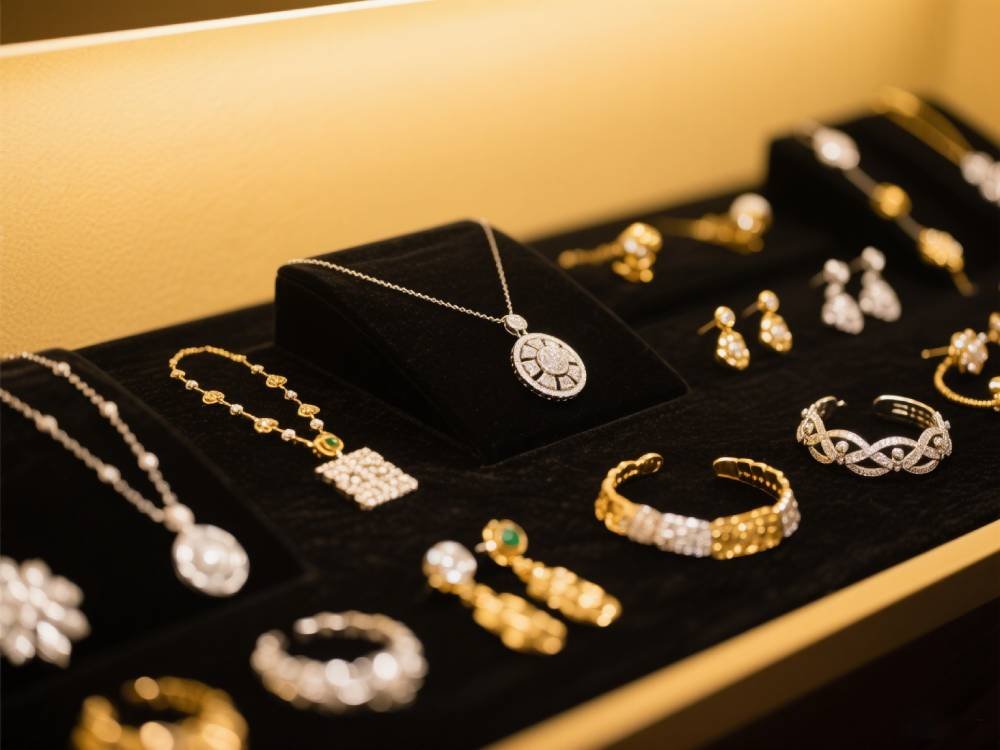
Multi-stage quality inspection mechanism: not one-time inspection, but full process control
High-quality jewelry is not “detected” but “controlled”. However, establishing a scientific multi-stage inspection system is still an indispensable means to control the quality of finished products.
Raw material incoming inspection: including silver content detection (using XRF spectrometer), natural/synthetic identification of gemstones, size and shape consistency inspection, etc.
Process quality inspection (IPQC): Set up process inspections at key nodes, such as whether the welding is firm, whether the polishing surface is uniform, whether the inlaid gemstones are loose, whether the engraving is clear, etc. Avoid “bad semi-finished products” from flowing into the next process.
Finished product final inspection (FQC): including size comparison, visual inspection of appearance (scratches, oxidation, fracture), wearing test, packaging integrity, etc. It is recommended to use professional testing tools such as vernier calipers, magnifying glasses, colorimeter, etc.
Random sampling and third-party testing: Before large-scale delivery, third-party laboratories such as SGS and BV can be entrusted to test silver content, electroplating thickness, nickel release, etc. to increase brand credibility.
Cooperate with professional manufacturers: experience and system guarantee stable quality
An excellent manufacturer is not only a production executor, but also a “co-maintainer” of your brand quality management. When selecting custom jewelry manufacturers, the following aspects are particularly important:
Experience accumulation: Factories with more than 10 years of experience in mass customization often have the ability to handle complex processes and multiple SKU collaboration, and can flexibly respond to challenges such as tight deadlines and design changes.
Factory qualifications and system certification: Such as ISO 9001 quality management system certification and BSCI social responsibility certification, which reflect the standardization of its management process and its emphasis on quality.
Production equipment and process completeness: Does it have one-stop service from design, molding, casting, polishing, inlaying, electroplating to packaging? Does it have its own laboratory testing equipment?
Sample review and trial production mechanism: Provide samples for review before mass production, and even recommend small batch trial production (such as 20~50 pieces) as pre-mass verification.
Successful cooperation cases: Have you provided mass customization services for international brands? Do you have export experience in multiple styles and multiple countries? You can ask the manufacturer to provide reference pictures or customer reviews of past projects.
Take Fulcol custom jewelry wholesale manufacturer as an example. It has more than 15 years of customization and export experience in the field of sterling silver and brass jewelry. The factory is equipped with 30+ experienced technicians, complete CNC and electroplating equipment, and has passed ISO 9001, BSCI and other certifications, with large-scale customization capabilities and fine quality control capabilities.
| Start Your Custom Order | Email: info@fulcol.com | Number: +86 13055603907 |
Customizing jewelry in batches does not mean giving up uniqueness and sophistication. Only by establishing a complete closed-loop system around “design-material-production-quality inspection-delivery” and choosing professional and trustworthy manufacturers can we continue to output high-quality customized products in the market.
At the same time, it is recommended that brands establish an internal quality database to record the design parameters, material sources, production batches and inspection results of each batch, in preparation for future product repurchase, traceability and process optimization. Through systematic management, customized jewelry can be transformed from “artwork” to controllable “high-end goods”, achieving a win-win situation in scale and quality.
Only by insisting on quality can we stand out in the customization market and win the trust and repurchase of customers.
